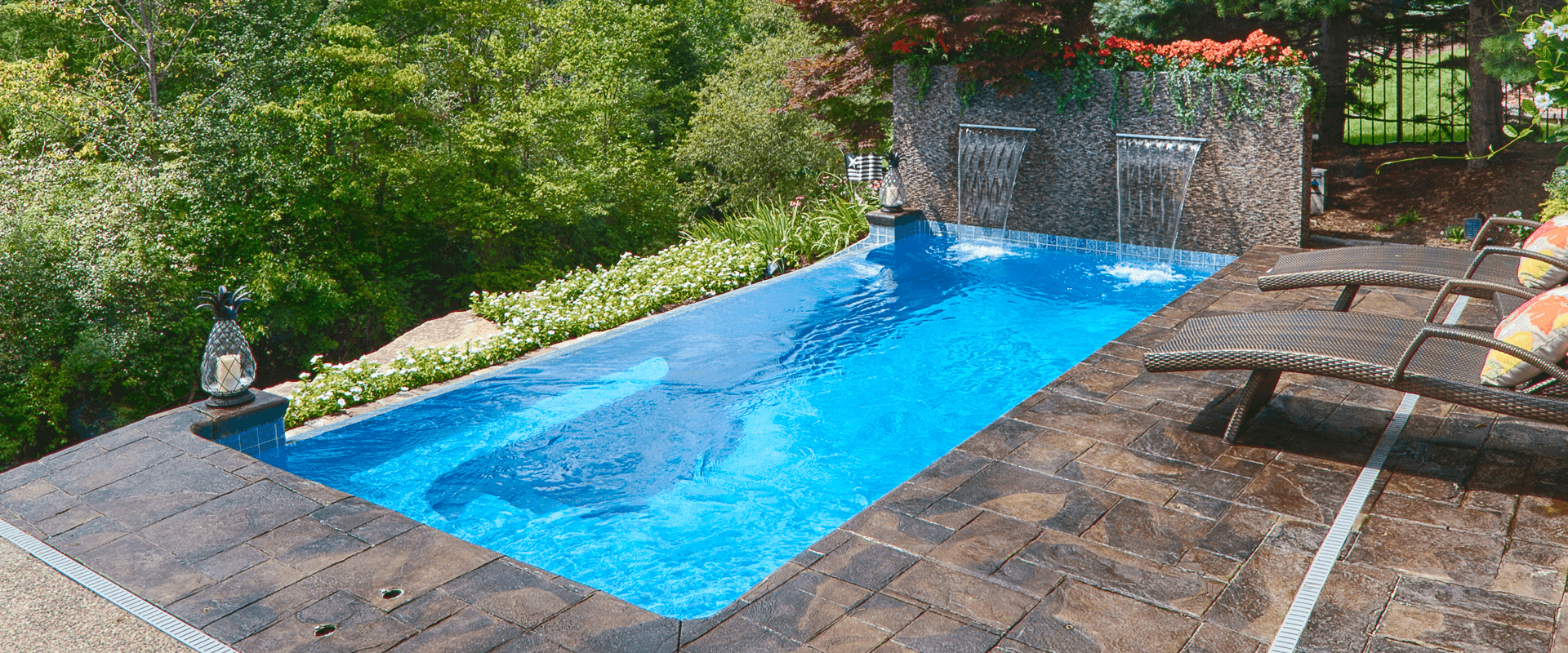877-929-7665
Five Essential Steps to Maintain Your Pool’s Finish
For many homeowners, the decision to install a fiberglass pool is influenced by the widely recognized benefit of reduced maintenance. The non-porous surface of a fiberglass pool significantly lessens the likelihood of algae growth and reduces the demand for chemicals to maintain water balance. This inherent characteristic of fiberglass pools contributes to their appeal, offering homeowners more time to enjoy their aquatic sanctuary with less laborious upkeep. However, it’s crucial to understand that “lower maintenance” does not equate to “maintenance-free.” For fiberglass pool owners, maintaining your pool’s vibrant, smooth finish is just as important as keeping the water clear and inviting. While the allure of crystal-clear water is undeniable, the unseen balance of water chemistry plays the most crucial role in preserving the integrity and appearance of your pool. This post explores five essential steps to maintain your pool’s finish, including tips on proper pool water chemistry.
Use a Stain and Scale Control Product Regularly
Even well-balanced water can carry minerals that deposit on your pool’s surface, leading to staining or scale buildup. A reliable stain and scale control product helps prevent fiberglass pool discoloration. These products contain chelating agents that can effectively shield your pool from calcium. Make it a part of your regular pool maintenance routine. We’ve found that SC-1000 by Orenda and Scale & Stain Eliminator by Pool Stain Removers work well.
Avoid Calcium Hypochlorite
Chlorine protects your pool’s health, freeing it from harmful bacteria and algae. However, the relationship between chlorine and fiberglass pools must be carefully managed. Maintaining free chlorine levels between 1 and 3 parts per million (ppm) is ideal. Beware of exceeding 5 ppm, as high chlorine levels can cause irreversible damage to your pool’s surface, leading to discoloration and degradation of the gelcoat. If you need to increase it temporarily, make sure your pH stays below 7.8 to avoid damage.
Avoid Calcium Hypochlorite
While calcium hypochlorite is favored in various pool contexts for shock treatments, it poses risks for fiberglass pools due to its propensity to elevate pH levels and deliver a high dose of free chlorine. Such characteristics can lead to lasting damage to the pool’s surface. Liquid chlorine emerges as a preferable alternative, offering a safer means to manage pool hygiene without the associated risks of calcium hypochlorite. Nevertheless, vigilance is required to prevent the adverse effects of excessive chlorine, ensuring the pool’s surface remains pristine.
Keep pH Between 7.2-7.4
Maintaining a pH range between 7.2 and 7.4. This helps keep your chlorine effective and protects the pool’s surface. A pH above 7.8 can contribute to scaling and discoloration, while pH that’s too low can lead to etching. Regular testing ensures this critical parameter stays within range.
Maintain Calcium Hardness Below 120 ppm
Fiberglass pools don’t need the same high calcium levels as concrete pools. In fact, keeping calcium hardness under 120 ppm helps prevent scale buildup and maintains the beauty of your surface finish. Do no add calcium-based products. If your water is above 120 ppm, use a chelating stain/metal and scale control product to prevent scaling and discoloration. We mentioned a couple great options above.
Maintain Chlorine Levels Between 1-3 ppm
Chlorine is essential, but too much can harm your pool’s finish. Keep free chlorine between 1 and 3 ppm, and avoid exceeding 5 ppm. If you need to super chlorinate, ensure your pH is well-controlled to minimize damage. Using liquid chlorine in the correct amounts is both safe and effective for fiberglass pools.
Bonus Tips: Don’t Assume Your Pool Pros Know It All
The pool maintenance industry is constantly evolving, with new products and refined best practices emerging regularly. As a pool owner, staying informed about these developments is beneficial to ensure your pool receives the best care possible.
Engage with your pool maintenance professionals and inquire whether they are familiar with specific parameters for fiberglass pools. Fiberglass pools are unique and should be treated as such. By following these five essential tips and staying on top of your water chemistry, you’ll protect your pool’s beauty and performance for years to come.
Pool ownership is a journey—but armed with the right knowledge, it’s one you can enjoy with confidence.
